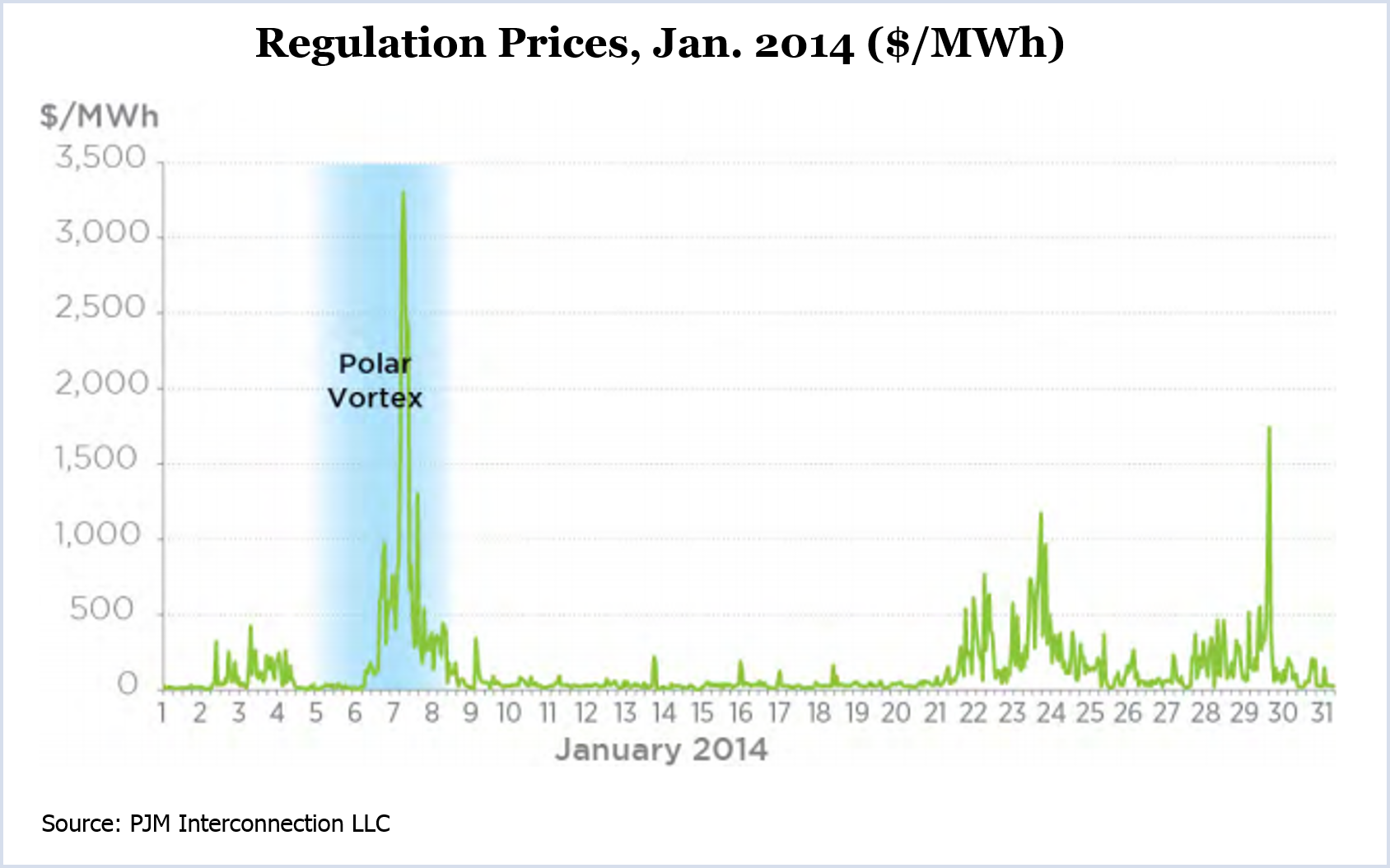
PJM officials drafted a proposed problem statement in response to the polar vortex in early January, when regulation market prices spiked to 4.5 times normal levels.
Regulation prices hit $3,296/MWh at the peak of the polar vortex as real-time energy prices rose above $1,800/MWh. Including lost opportunity costs — for example forgone revenue in the energy market — PJM rang up a $65 million bill for regulation in January.
PJM’s Jeff Schmidt said the jump was due in part to the fact that high-performing generators were being used for energy and reserves instead of regulation, leaving the RTO to rely on poorer-performing generators to maintain system frequency at 60 hertz. Regulation market prices can be influenced by poorer-performing resources because the calculation uses a “historic performance score” in the denominator.
The issue was first raised in PJM’s analysis of the system’s performance during January’s cold. PJM said stakeholders should consider whether the division by the performance score is appropriate and whether the minimum participation requirements are high enough. It also said they should consider whether to go short on regulation during system peaks.
But the 4x jump in regulation prices was actually far below the increases in operating reserve (10x) and synchronized reserve (9x) costs for the same period.
“I don’t understand why it’s a problem,” Market Monitor Joe Bowring said during a discussion before the Market Implementation Committee last week. “Poor-performing resources raised the prices. That’s exactly the way it’s supposed to work.”
Brock Ondayko of American Electric Power Energy Supply agreed with Bowring. “If we start weeding out the slower performers I guess you would end up with no regulation resources,” he said.
“That certainly could happen,” Schmidt acknowledged.
Public Service Enterprise Group’s John Citrolo said it was improper for PJM to take an “administrative role” in controlling volatility “rather than letting the market handle it.” He said load-serving entities can hedge against such risks.
John Webster of Icetec said increasing the performance requirement for regulation resources might actually increase prices.
After an extended discussion, MIC Chair Adrien Ford said she would table the matter, though PJM may bring it back at a later meeting.
Performance-Based Pricing
In response to the Federal Energy Regulatory Commission’s Order 755, PJM switched in October 2012 to performance-based regulation, which is intended to pay resources based on the accuracy, speed and precision of their response.
In the 2013 State of the Market report, the Monitor said that the changes had improved the regulation market, but that the market’s design remained “flawed,” including an incorrect definition of opportunity cost and an inconsistent implementation of the marginal benefit factor — a conversion calculation — in optimization, pricing and settlement.


